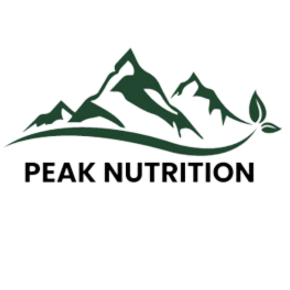When it comes to preparing meals in the back country, the debate between cooking meals and cold soaking is a tale as old as time. Both methods have advantages and disadvantages so you can decide which option works best for you!
Cold Soaking

Image Description: Cold Soaked Buffalo Chicken Pasta Salad
Cold soaking food is a no-cook approach for preparing meals. This method includes rehydrating food with cold water instead of cooking or using boiling water. No stove, fuel, or cookware is needed for cold soaking, making this a lightweight option.
- Simplicity – Cold soaking is simple and is fuss free! You add water to your food and wait for it to rehydrate.
- Time Savings – There is no need to wait to find a flat surface, heat up water, or cook any food, making this a great option for those who want quick meal preparation. This is also great for those who like to multitask. While letting your food rehydrate, you can get some more miles in, set up camp, or complete other activities.
- Weight savings – There is no need to haul around fuel, a stove, and cookware, reducing your packs weight significantly. This is especially important for those trekking long miles during their trip.
Cons of Cold Soaking
- Long Rehydration Time – Because there is no heat to speed up the rehydration process, cold soaking can take anywhere from 30 minutes to 1 ½ hours for a meal to be ready.
- Cold Meals – Sometimes when you’re on trail, you just want a warm, cozy meal, especially on those chilly evenings. This option may not leave you feeling satisfied if warm meals are something that you enjoy throughout the day.
- Limited Foods – Not all foods are able to be cold soaked, like some meats. If this is the option you choose, be mindful about which foods work for cold soaking – such as oatmeal, couscous, dehydrated rice and pastas, and ramen. Crunching on uncooked rice at the end of a hard day can really be a disappointment if you don’t prepare properly!
- Food Safety1 – When cold soaking foods, be sure to not let food sit at room temperature for longer than two hours for risk of dangerous bacteria growth, like Staphylococcus aureus, Campylobacter, Salmonella Enteritidis, and Escherichia coli. If the temperature outside is greater than 90 degrees, food should not be soaked for more than one hour.
Cooking Meals

Photo by: Pauline
Image Description: Cooked Breakfast Skillet
This method involves a portable stove, usually relying on isobutane canisters, to heat and prepare food, and or water. This method allows for simplistic meals and more complex recipes.
Pros of Cooking
- Variety – Cooking camp meals allows for many different food possibilities. Most foods, low in fat content, can be dehydrated and rehydrated by boiling.
- Fast Rehydration2 – Cooking meals allows them to be ready in 10-15 minutes. Many people often boil water and add it to the dehydrated meals to keep clean up minimalistic.
- Warmth – On chilly nights, a warm meal and warm beverage can make all the difference in how you feel! It can also help raise your body temperature if you are in the outdoors during cooler seasons.
Cons of Cooking
- Complicated – Cooking meals can be complicated and require more time and energy to prepare. You need to manage your fuel consumption for your trip, carry a stove, lighter, and cookware, and need to clean up afterwards.
- Increased Weight – Cooking meals requires you to carry fuel canisters, a stove, cookware, and sometimes a lighter. This can increase your pack weight, slowing you down.
The Right Choice for You:
When deciding between cold soaking meals and cooking them for your adventure consider your trip, preferences, and any dietary needs that you may have. Ultimately, the choice depends on whatever your goals are and what will enhance your experience in the backcountry.
References:
- Food Safety and Inspection Service. “Danger Zone” (40°F – 140°F). 2024. Accessed August 1, 2024. https://www.fsis.usda.gov/food-safety/safe-food-handling-and-preparation/food-safety-basics/danger-zone-40f-140f#:~:text=Bacteria%20can%20be%20reintroduced%20to,or%20below%20within%20two%20hours.&text=Foods%20should%20be%20reheated%20thoroughly,or%20until%20hot%20and%20steaming.
- Krokida MK, Philippopoulos C. Rehydration of Dehydrated Foods. Drying Technology. 2005;23(4):799-830. doi:10.1081/drt-200054201
